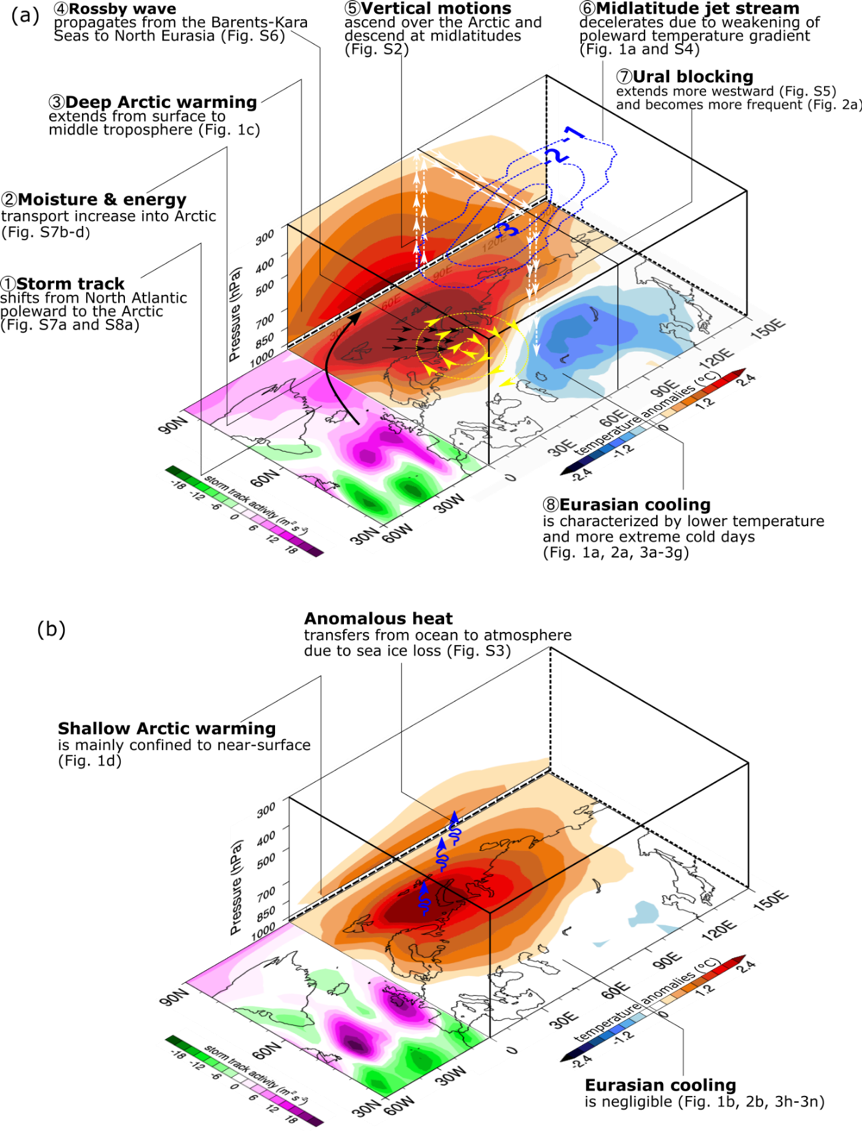Written by Shengping He from the Bjerknes Centre and the Geophysical Institute at the University of Bergen.
Many people are interested in the concurrence of Arctic warming and sea ice loss with more extreme cold winters at midlatitudes (e.g., Eurasia and North America) in the past decades. However, the causality in the Arctic-midlatitudes climate linkage is still an on-going academic debate.
The focal point of the debate is the divergent climate response at midlatitudes to Arctic warming among models and observations. A fact is that the simulated Arctic warming is also divergent. In some cases it extends deeply into the upper troposphere as the observation does, while in other cases is shallowly confined to near-surface (below 500 hPa, or about 5000 meters).
We speculate that the responses in Eurasian winter temperatures to shallow Arctic warming (i.e., surface and near-surface warming) versus deep Arctic warming (i.e., warming of the entire troposphere) in climate models are very different.
Using a large number of simulations from coupled and uncoupled climate models, we show that Eurasian below-average temperatures are more frequent in winters with deep warming compared to shallow, near-surface warming over the Barents-Kara Seas.
The figure below summarizes our results.

Read the full paper where we compared the winter-mean temperature and atmospheric circulation between shallow and deep Arctic warming in climate models here.
Reference
He, S., Xu, X., Furevik, T., & Gao, Y. ( 2020). Eurasian cooling linked to the vertical distribution of Arctic warming. Geophysical Research Letters, 47, e2020GL087212. https://doi.org/10.1029/2020GL087212

